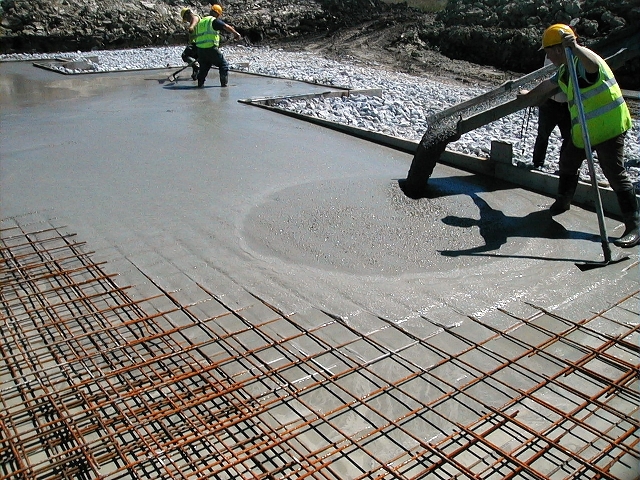What is Self-Consolidating Concrete?
Articles > What is Self-Consolidating Concrete?
Concrete, a composite material composed of cement, water, sand, and gravel, the world’s most widely used construction materials. In 2003, more than 110 million metric tons of cement were consumed in the United States (U.S. Department of the Interior 2004), hence it is important to understand the properties of concrete in order to ensure safe and durable structures. When concrete is poured into the formwork it has a composition containing irregularly distributed pockets of entrapped air voids, and these air voids have an adverse effect on the surface appearance of concrete and the concrete properties. In order to eliminate the entrapped air and voids in concrete and to ensure proper bonding between the concrete and reinforcement, freshly placed concrete is consolidated. Consolidation is the process of inducing a closer arrangement of the solid particles in freshly mixed concrete by reduction of voids. During placement some consolidation is caused by gravity, but in order to ensure that concrete is properly consolidated additional methods are also employed. The most common method of consolidation is vibration and proper vibration of concrete ensures that the concrete is consolidated around the reinforcement and in the corners of the formwork. If the fresh concrete is allowed to harden without consolidation, then the resulting hardened concrete tends to be non-uniform, weak, porous, and poorly bonded to the reinforcement.
To combat problems caused by improperly vibrated concrete, self consolidating concrete (SCC) was developed at the University of Tokyo in Japan around 1988 by Professor Okamura and his students. Major highlights of the development of SCC is shown in Figure below.

As it name implies, SCC is a concrete that is consolidated only through its self-weight, hence no additional compacting processes are needed. In addition, the composition of the concrete must remain uniform during placement and pumping. In order to be classified as an SCC the concrete must have the following key fresh properties: filling ability, passing ability, and resistance to segregation. Filling ability is ability of the concrete to flow into and fill
completely all spaces within the formwork under its own weight. Passing ability is the ability of the concrete to flow through tight openings (e.g. dense reinforcement) without any blocking. Resistance to segregation is the ability
of the concrete to meet the filling ability and passing ability requirements while maintaining uniform composition (hence, no separation of aggregate from paste, or water from solids).
A major disadvantage of SCC is that there is a lack of globally agreed upon test standards and mix designs. Furthermore, SCC is normally created with a higher paste volume and chemical admixture content than normally
vibrated concrete (NVC), and therefore the material cost of SCC often exceeds that of NVC. However, research and usage have shown that the usage of SCC technology reduces the total cost of labor, energy, required equipment and casting process. Therefore, when casting in highly congested areas, SCC is more productive, efficient, and has better constructability than conventional concrete.
 Read also:
Read also:
- Top software for Geotechnical Engineers
- What is concrete? Eleven different types of concrete
- Deep Compaction Techniques
- IS Codes Complete List for Civil Engineers
- Where are dowel bars provided?
 Share:
Share:
Follow our official Facebook page (@civilengineeringbible) and Twitter page (@CivilEngBible) and do not miss the best civil engineering tools and articles!

